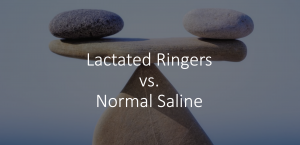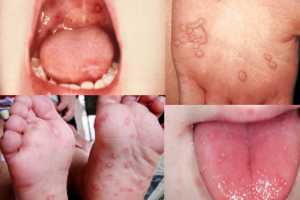Welcome to the emDOCs Videocast – please subscribe to our YouTube channel. These videos will cover post summaries, take homes on clinical condition, and EBM/guideline literature updates. Today we focus on pancreatitis.
Fluids in Pancreatitis
#1: de-Madaria E, Buxbaum JL, Maisonneuve P, et al; ERICA Consortium. Aggressive or Moderate Fluid Resuscitation in Acute Pancreatitis. N Engl J Med. 2022 Sep 15;387(11):989-1000.
- Question:In adults with acute pancreatitis, does moderate fluid resuscitation compared to aggressive resuscitation reduce the development of moderately severe or severe pancreatitis?
- Multicenter, open-label, parallel-group, randomized, controlled, superiority trial
- 18 centers; 4 countries
- Included patients > 18 years with mild/moderate pancreatitis within 24 hours
- Diagnosed using Revised Atlanta Classification (2 of 3): Pain characteristic of pancreatitis, amylase/lipase > 3X ULN, imaging findings characteristic of pancreatitis
- Intervention: LR Bolus of 10 cc/kg in patients with hypovolemia or no bolus in those with normovolemia followed by 1.5 cc/kg/hour of LR
- Control: LR Bolus of 20 cc/kg (regardless of fluid status) followed by 3.0 cc/kg/hour of LR
- Primary outcome: Progression to moderately severe or severe acute pancreatitis
- Primary Safety Endpoint: Fluid Overload defined by 2 of the following 3
- Criterion 1: non-invasive evidence of heart failure (ie echo), radiographic evidence of pulmonary congestion, invasive cardiac Cath suggesting heart failure.
- Criterion 2: Dyspnea
- Criterion 3: Heart failure signs: peripheral edema, pulmonary rales, increased JVP or hepatojugular reflex
- Secondary Outcomes: Organ failure, Local Complications, Persistent Organ Failure, Respiratory Failure, Hospital LOS, ICU Admission, ICU LOS
- 676 patients assessed for enrollment; 249 patients included
- Primary Outcome: All-cause mortality at 28 days
- Hydrocortisone 6.2% vs. Placebo 11.9%, NNT 18
- Median Fluid Received:
- Aggressive: 7.8L (Range 6.5 to 9.8L)
- Moderate: 5.5L (Range 4.0 to 6.8L)
- Progression to mod/sevpancreatitis: 22.1% vs. 17.3%, aRR1.30 (0.78-2.18)
- Fluid Overload: 20.5% vs. 6.3%, aRR 2.85 (1.36-5.94)
- Trial stopped early due to harm, potentially overinflated results
- Author Takeaway: In patients with mild/moderate pancreatitis, aggressive fluid resuscitation can lead to volume overload.
- Multicenter, open-label, parallel-group, randomized, controlled, superiority trial
#2: Li XW, Wang CH, Dai JW, et al. Comparison of clinical outcomes between aggressive and non-aggressive intravenous hydration for acute pancreatitis: a systematic review and meta-analysis. Crit Care. 2023 Mar 22;27(1):122.
- Question: What are the outcomes between aggressive and non-aggressive intravenous hydration in severe and non-severe AP?
- Systematic review and meta-analysis.
- Included 9 studies, 953 patients
- Aggressive IV hydration significantly increased mortality risk in severe AP (pooled RR: 2.45, 95% CI: 1.37, 4.40), but the result in non-severe AP was inconclusive (pooled RR: 2.26, 95% CI: 0.54, 9.44).
- Aggressive IV hydration increased fluid-related complication risk in severe (pooled RR: 2.22, 95% CI 1.36, 3.63) and non-severe AP (pooled RR: 3.25, 95% CI: 1.53, 6.93).
- NNH 20 for increased mortality; NNH 7 for fluid-related complications
Hypertriglycidemic pancreatitis
- Uncommon but not rare; accounts for up to 10% of all cases of pancreatitis.
- Defined by pancreatitis + triglyceride love > 1000 mg/dL + no other cause (must exclude other causes).
- Triglyceride is 3 fatty acids attached to glycerol molecule.
- Unsure exact pathophysiology, but free fatty acids may lead to pancreatic inflammation.
- Medications (furosemide, estrogen, chemotherapies), diabetes, pregnancy, alcohol, hypothyroidism increase free fatty acid.
- Management: 1) Discontinue meds causing hypertriglyceridemia, 2) Gemfibrozil 600 mg BID, 3) Electrolyte repletion, 4) Gentle dextrose/insulin infusion, 5) Nutritional support.







